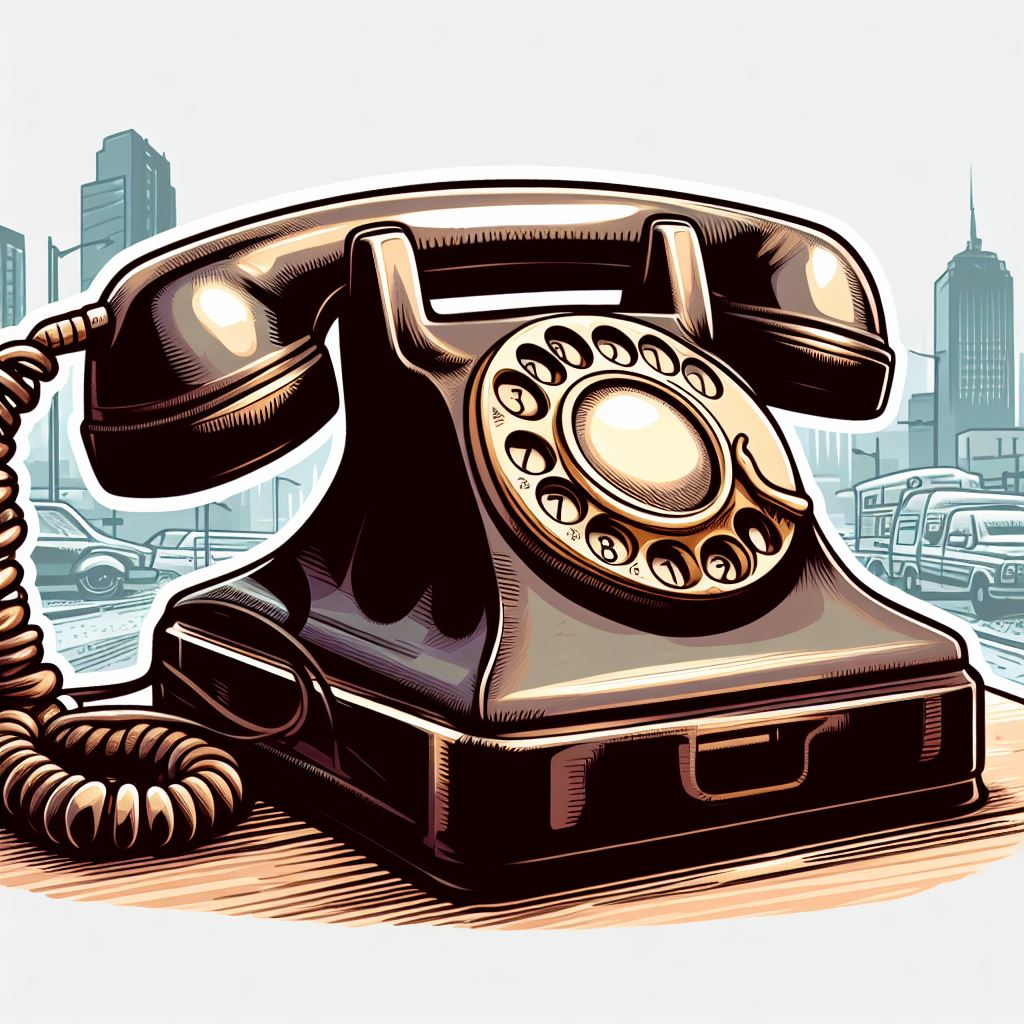Estimated reading time: 10 mins
In the vast landscape of human innovation, the path from concept to successful product is rarely a straight line. There are many invention ideas that haven’t been invented yet. And then there are inventions that we rely on today that were originally intended for entirely different purposes. The stories of these inventions are not just fascinating historical footnotes; they are powerful reminders of the unpredictability of creativity and the serendipitous nature of discovery. Here, we explore a collection of remarkable inventions that veered off their original course to find a different, often more impactful, destiny.
Post-it Notes: The Accidental Bookmark
The colorful sticky squares that clutter desks and monitor edges around the world were the result of a failed attempt to create a super-strong adhesive. In 1968, Dr. Spencer Silver, a scientist at 3M, was working to develop a new adhesive. Instead, he accidentally created a low-tack, reusable pressure-sensitive adhesive. This “mistake” lay dormant until a colleague, Art Fry, used the adhesive to anchor his bookmark in his hymnbook. By 1980, Post-it Notes were being sold nationwide, and today they are an indispensable tool for reminders, notes, and organization.
Penicillin: The Mold that Fought Bacteria
One of the most profound medical breakthroughs was discovered somewhat by chance. In 1928, Sir Alexander Fleming noticed that a petri dish containing Staphylococcus bacteria had been contaminated with mold, and the bacteria surrounding the mold were being destroyed. This mold turned out to be Penicillium notatum, and it led to the development of penicillin, the world’s first antibiotic. It has saved countless lives since and transformed the field of medicine, even though Fleming was originally researching the flu.
The Microwave Oven: A Melting Chocolate Bar

The microwave oven, a fixture in kitchens across the globe, originated from a radar-related research project during World War II. Percy Spencer, an engineer with the Raytheon Corporation, was testing a military-grade magnetron when he discovered that the candy bar in his pocket had melted. Intrigued, Spencer experimented by aiming the magnetron at other food items, leading to the realization that microwaves could cook food quickly. In 1947, the first commercial microwave oven hit the market, initially more popular in commercial kitchens before becoming a household staple.
Viagra: The Heart Medication That Got Personal
Originally developed as a treatment for high blood pressure and angina, Viagra (sildenafil citrate) did not perform well in clinical trials for its intended purpose. However, during these trials, researchers discovered a significant and unexpected side effect in male participants: the alleviation of erectile dysfunction. Pfizer, the pharmaceutical company behind Viagra, quickly shifted gears and by 1998 had the drug approved for this new use. It has since become one of the most well-known pharmaceuticals in the world.
Play-Doh: From Wallpaper Cleaner to Childhood Staple
Before it became one of the most beloved children’s toys, Play-Doh had a more practical purpose. In the 1930s, it was originally created as a wallpaper cleaner by Noah McVicker for Kutol Products. With the decline in coal heating, the need for wallpaper cleaning decreased, and the product’s relevance waned. However, McVicker’s nephew discovered another use for the non-toxic material: a safe modeling clay for children. Rebranded as Play-Doh, the product was exhibited at an educational convention in 1956 and quickly became a hit.
The Slinky: A Naval Stabilizer Turned Toy
The Slinky, the preeminent staircase-walking spring, was invented by accident by Richard James, a naval mechanical engineer trying to develop a spring that would stabilize sensitive instruments on ships. When one of the springs fell to the ground and continued to “walk,” James saw the potential for a new toy. In 1945, after a successful demonstration at Gimbels department store in Philadelphia, the Slinky became an instant favorite, and it remains a nostalgic item with enduring appeal.
Listerine: From Surgical Antiseptic to Bad Breath Cure
Listerine, now a household name in oral hygiene, was originally formulated in the 19th century as a surgical antiseptic. It was named after Joseph Lister, who pioneered antiseptic surgery. Over the years, Listerine was marketed for a variety of uses, including as a floor cleaner and a cure for gonorrhea. However, it wasn’t until the 1920s that it was pitched as a solution for “chronic halitosis,” a then obscure medical term for bad breath, that it found its lucrative market.
Bubble Wrap: The Accidental Wallpaper
Bubble Wrap, the packing material we can’t resist popping, was originally intended to be a type of textured wallpaper. Invented by engineers Alfred Fielding and Marc Chavannes in 1957, the product was a result of sealing two shower curtains together, creating a smattering of air bubbles. When the wallpaper idea didn’t take off, they marketed it as greenhouse insulation. It was only when IBM used Bubble Wrap to protect a shipment of computers that its value as protective packaging was recognized.
The Pacemaker: External to Internal
The pacemaker, a device that is now commonly implanted to manage heart rhythms, was not always an internal affair. Early versions were external devices, and the concept of electrical stimulation for the heart dates back to the 19th century. However, it was only after an accidental discovery by Wilson Greatbatch, an engineer and inventor, that the pacemaker found its true calling. Greatbatch was working on an oscillator to record heart sounds when he installed a wrong resistor, which caused the device to emit a pulse. Realizing the potential, he refined the invention to regulate heartbeats, leading to the development of the implantable pacemaker.
The Frisbee: From Pie Plate to Plaything


The Frisbee, a staple of beach outings and park picnics, evolved from a simple pie plate. Yale University students would toss empty pie tins from the Frisbie Pie Company to each other, yelling “Frisbie!” to warn of the incoming metal. This pastime caught the attention of Walter Morrison, who saw the potential for a plastic version. He developed a plastic disc that could fly further and with more precision than the tin plates. In 1957, toy company Wham-O bought the design, named it the “Frisbee,” and the rest is recreational history.
Coca-Cola: The Medicinal Elixir
Coca-Cola, one of the world’s most iconic beverages, was originally concocted by Dr. John S. Pemberton as a patent medicine. Pemberton, a pharmacist, designed the syrup to alleviate headaches and provide energy. The drink was sold at soda fountains as a medicinal elixir. When it was combined with carbonated water, the familiar soft drink was born. The original recipe also contained extracts of the coca leaf and kola nut, lending to the name Coca-Cola. It wasn’t until later that it was marketed as a refreshing beverage rather than a health tonic.
Teflon: The Happy Accidental Non-Stick
Teflon, the non-stick coating that revolutionized cookware, was discovered by accident in 1938 by Roy J. Plunkett while he was working on refrigerants for DuPont. A batch of tetrafluoroethylene gas had spontaneously polymerized, resulting in a slippery, non-reactive substance, polytetrafluoroethylene (PTFE). Initially used in military equipment and later in the aerospace industry, it wasn’t until the 1960s that Teflon was applied to cookware, creating the non-stick frying pans we are familiar with today.
The Inkjet Printer: From Coffee Stains to Crisp Text
The inkjet printer, a common device in both homes and offices, has roots in an accidental coffee spill. A Canon engineer named Ichiro Endo noticed how a hot soldering iron accidentally squirted ink when it touched a syringe filled with it. This observation led to the development of the inkjet technology in the 1970s, which allows for high-speed, precise printing by propelling droplets of ink onto paper.
Dynamite: From Explosive to Nobel Peace Prize
Alfred Nobel, the inventor of dynamite, initially aimed to create a safer alternative to the unpredictable and dangerous nitroglycerin used in mining. Dynamite indeed made construction and demolition safer and more efficient, but it also became widely used in warfare, which was not Nobel’s original intention. The deep regret Nobel felt over the military use of his invention led to the establishment of the Nobel Prizes, including the Nobel Peace Prize, in an effort to support endeavors that benefited humanity.
Saccharin: A Sweet Mistake
Saccharin, the first artificial sweetener, was discovered in 1879 by Constantin Fahlberg, who accidentally noticed the sweet taste of an unknown compound on his hand after a day’s work in the lab. Initially, saccharin was used to sweeten food for diabetics and others who needed to avoid sugar. Over time, it became popular as a low-calorie sugar substitute, despite not being created with the intention of becoming a consumer sweetener.
The X-Ray: Unseen Visions
Wilhelm Conrad Röntgen’s discovery of X-rays in 1895 was a landmark event in the field of medical diagnostics. While experimenting with cathode rays, Röntgen noticed a glow emanating from a nearby coated screen. He deduced that a new kind of ray, capable of passing through solid objects, was responsible. Originally a subject of curiosity, the medical profession soon adopted X-rays for looking inside the human body without surgery, transforming diagnostic practices.
Velcro: Inspired by Burdock Burrs
The hook-and-loop fastener, known by the brand name Velcro, was invented by George de Mestral in the 1940s after a hunting trip in the Alps. Noticing how burdock burrs stuck to his clothes and his dog’s fur, he examined them under a microscope and observed their natural hook-like shape. This inspired the creation of Velcro, which became widely used in clothing, footwear, and a multitude of other applications.
The Laser: A Solution Seeking a Problem
The laser (Light Amplification by Stimulated Emission of Radiation) was theorized by Albert Einstein in the early 20th century and first built by Theodore H. Maiman in 1960. Initially, it was a solution looking for a problem, dubbed “a solution waiting for a problem to solve.” Today, lasers have found applications in countless areas including medicine, communications, industry, and entertainment.
The EpiPen: Military Tech Turned Medical Device
The EpiPen, a life-saving device used to treat severe allergic reactions, has its origins in military technology. The auto-injector mechanism was first designed to protect soldiers from chemical warfare agents. The concept was later adapted for delivering epinephrine, providing a quick and easy way for individuals to treat anaphylaxis in emergency situations.
Superglue: A Clear Vision for Gunsights
Superglue, or cyanoacrylate, was discovered by Dr. Harry Coover Jr. while he was developing a clear plastic for gunsights during World War II. He rejected the substance because it was too sticky. It was only later, when rediscovered, that its potential as a fast-acting adhesive was recognized. Now, it’s not just used for household repairs but also in medical procedures and forensic applications.
The Jacuzzi: Pain Relief to Pleasure
The Jacuzzi was originally invented in the 1950s by the Jacuzzi brothers to provide hydrotherapy treatments for those with arthritis. The portable jet pump they designed could be placed into a standard bathtub to provide pain relief. It wasn’t until later that they developed a whirlpool bath, marketing it as a luxury item for relaxation and entertainment.
The Computer: From War Machines to Personal Devices
Early computers like ENIAC were developed primarily for military applications, such as calculating artillery firing tables and developing nuclear weapons. It was only in the following decades that computers shrank in size and cost, becoming accessible to businesses and eventually finding their way into homes for personal use.
The Telephone: A Tool for the Hearing Impaired


Alexander Graham Bell’s work on the telephone was initially an attempt to improve the telegraph and to help deaf individuals communicate. Bell’s mother and wife were both hearing-impaired, which drove his interest in acoustic mechanics. The telephone, of course, became one of the most significant inventions of all time, changing the way the world communicates.
Duct Tape: From Ammunition Cases to Handyman’s Secret
Duct tape was developed during World War II as a waterproof sealing tape for ammunition cases. Soldiers quickly discovered its strength and versatility, using it for emergency repairs on everything from jeeps to aircraft. After the war, it became a common item in toolboxes everywhere, known for its durability and multipurpose use.
The Band-Aid: From Battlefield to Bathroom Cabinet
Band-Aids were created in 1920 by Earle Dickson, an employee of Johnson & Johnson, to help his wife who frequently cut and burned herself while cooking. The product was first marketed to the public as a way for consumers to self-treat small wounds, a far cry from the initial personal need that inspired its creation.
The Internet: From Defense Network to Global Communication
Originally developed as ARPANET by the U.S. Department of Defense to maintain communications in the event of a nuclear attack, the Internet has become the global system of interconnected computer networks that we rely on for information, communication, and entertainment.
Conclusion
These stories of accidental discovery and repurposed inventions are a testament to human ingenuity and adaptability. They highlight that the journey of innovation is full of surprises and that “mistakes” can lead to ground-breaking products and technologies. What begins as an idea for one purpose can often fulfil a need that was never originally anticipated, proving that sometimes the most amazing inventions are those that do not meet their original purpose.
